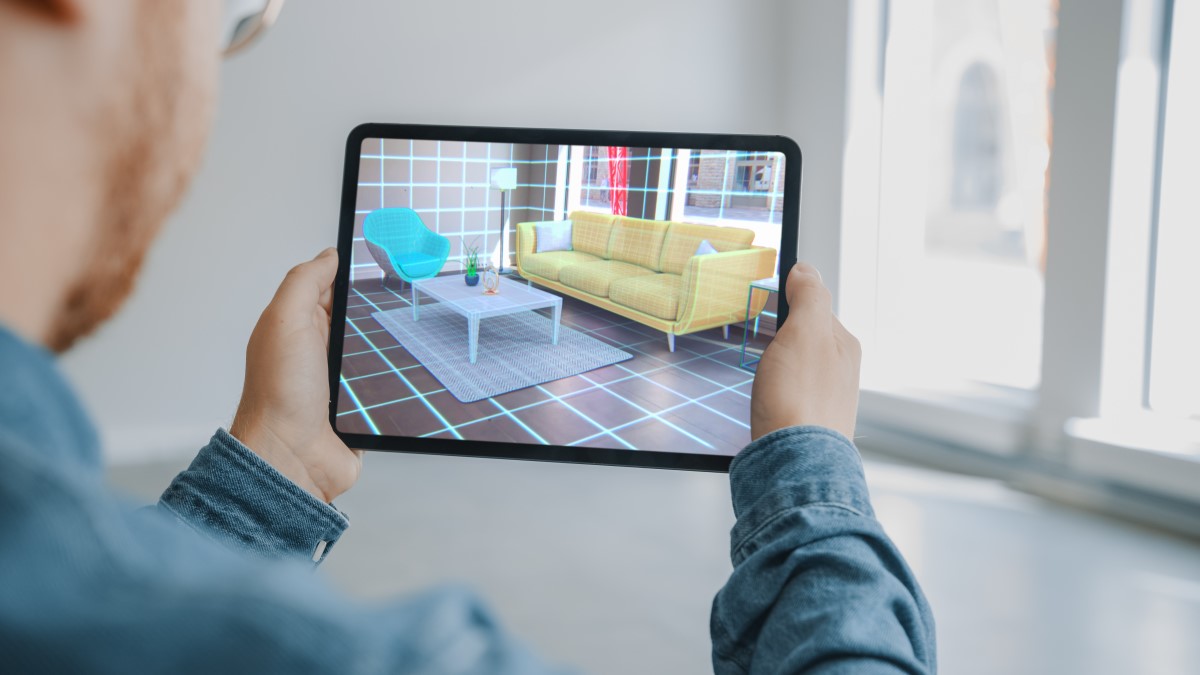Blog | How the latest digital technologies can benefit your small business
Traditional methods that businesses, big and small, used to interact with and market to their customers, were significantly disrupted by the global pandemic. This, of course, forced businesses to quickly innovate and adapt – or fail – as life shifted from in-person and tactile, to online and touchless.
But one of the single biggest developments has been in the adoption of digital technologies – namely artificial intelligence (AI) and extended reality (XR). Both technologies first became commonplace among large enterprises, but now – post pandemic – we are seeing their relevance to smaller businesses.
And as these technologies continue to evolve, so have your customers’ expectations when it comes to their shopping and buying journeys.
In fact, about 19 percent of Irish consumers stated they were interested in more immersive augmented reality or virtual reality experiences. Polling data from Digital Business Ireland also found that 18% of Irish adults had used ChatGPT, an artificial intelligence-powered chatbot tool, for work and personal purposes.

So, what is AI and XR?
AI – or artificial intelligence – is, in the simplest terms, a machine imitating our human ability to problem solve, reason, learn and yes – even show creativity.
One of the most common terms that gets used alongside AI is machine learning. This is the idea of machines using algorithms (computer-based processes and calculations) and available data to become better at performing tasks and providing useful answers and information. For a practical example, think of how a Google or Alexa-based smart speaker learns to have more natural conversations with you.
XR – or extended reality – is a catch-all term that includes augmented reality (AR) and virtual reality (VR) technologies.
AR overlays computer-generated virtual elements, like data, images, and words, onto your real-world surroundings as part of an enhanced sensory experience.
VR takes things a few steps further by creating an immersive and completely computer-generated environment that might even appear to be real.

How can AI improve or enhance your business?
AI can help streamline many of your processes while delivering a better customer experience.
How? AI-driven chatbots or virtual agents do a reasonable job of imitating human-like conversation patterns and can help take many of the more mundane and repetitive customer service tasks off your hands.
For example, using a chatbot on your site allows your customers to get prompt answers to questions about your products and services. Chatbots and virtual agents can also help with functions like booking appointments as well as sending automated order confirmations and reminder messages.
Aside from the tasks they perform on your behalf, chatbots are also constantly learning from each customer interaction and can improve their accuracy and effectiveness over time.
Driven in large part by the pandemic and the resulting shift to at-home shopping, chatbot usage increased by 67% between 2018 and 2020, according to Salesforce. The company also found that 65% of customers preferred interacting with self-serve chatbots for simple requests or answers.

When it comes to your day-to-day marketing activities, programs like ChatGPT – when used correctly – can be a massive help to time-crunched business owners. One of the most common ways people are tapping into ChatGPT is to create content, including emails, blog posts, product descriptions and headlines.
For example, you could prompt ChatGPT to “write a cheeky promotional email advertising a 50% off sale on children’s shoes” and then tweak whatever content it generates to your liking.
One of the most common applications of augmented reality within retail is virtual try-ons. This typically involves using the camera on your smartphone, tablet or laptop to overlay clothes, accessories (like glasses) and make-up onto your face and body. So, if your customer doesn’t have the time or desire to set foot in your physical store, they can still enjoy a much more interactive experience with your products.
Similarly, furniture or home decor shops can provide an AR experience to customers interested in seeing how a particular piece (e.g. a bulky bookshelf or retro-looking lamp) could look within their own living spaces. Or – an independent vehicle dealership might use VR so that customers can check out a vehicle’s interior, features, etc. through a VR-powered headset.

AR can also be used in interactive and engaging marketing campaigns, such as interactive window displays or scavenger hunts and contests following the example of the popular game, Pokémon Go.
When it comes to your own employees, AI and VR could help you deliver interactive, virtual training experiences – or even step-by-step tutorials for tackling more complicated, technical tasks.
Real-life examples of AI and XR in action to get you inspired
Cosmetics retailer Sculpted by Aimee offers a virtual makeup try-on where customers can sample a wide selection of makeup simply by using the selfie camera on their smartphones.
Specsavers allows customers to use their webcams or phones to test out their full range of glasses without ever needing to stop by their shop.
Irish furniture brand EZ Living followed Swedish furniture giant IKEA by harnessing AR technology to let customers see furniture and furnishings in their own homes.
Now, let’s switch gears slightly to AI examples:
Dublin-based jeweller Mo Muse uses their chat bot to answer product-related questions and track the status of your order.
Starbucks’ My Barista chat bot, meanwhile, allows you to place drink and food orders via your own voice or text within the Starbucks mobile application.

Where to start, and how to sensibly invest in digital technologies
Before diving into these digital technologies head-first, conduct some of research with your customer base to better understand what they expect out of a shopping/transactional experience with you.
Start by asking yourself: ‘Would technologies like AI and XR help improve or enhance their experience with my business?’
Next, consider what you might need equipment-wise. For AR, you’ll just need a smartphone and/or tablet with a camera. On the software end, providers like DeepAR or Vuforia allow you to customise their AR tools to suit your purposes.
On the virtual reality front, the investment can be higher, as you’ll need a VR headset, like the Oculus Rift.

If you’re curious about investing in AI tools, ask yourself: Are you bogged down with routine (but time consuming) tasks? Would implementing an AI chatbot save you time and energy?
Chatbot providers, like Drift and Birdeye offer a range of “off-the-shelf” solutions that specialise in providing conversational interactions with your customers, while also giving you insights into how your customers are interacting with your products and services.
Rest assured, there are numerous affordable, scalable ways of making these digital technologies work for you and your business. Experiment with a range of different solutions, get creative and discover for yourself what truly works and what doesn’t.
Further reading
For lots of advice on developing your web presence for your business, take a look at our insights and resources for growing your small business.
Laura Boyle is our Marketing Assistant working within our corporate communications team.